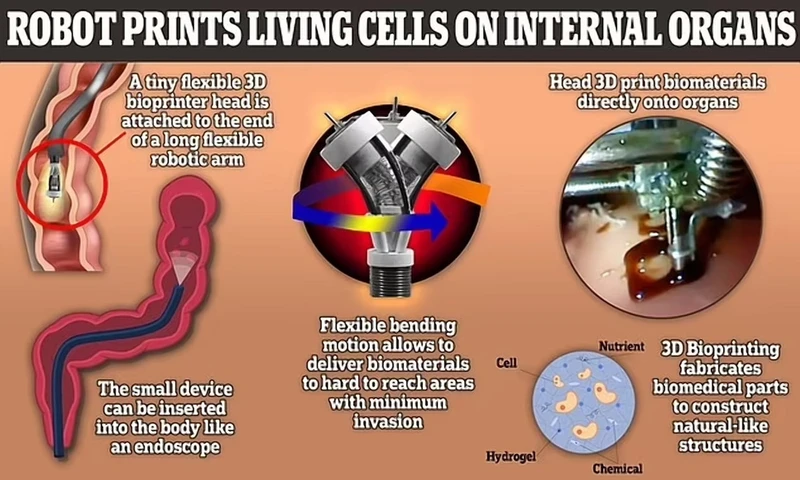A team of scientists from the University of South Wales (Sydney, Australia) has delighted technology enthusiasts with a true engineering marvel known as F3DB.
A robotic arm developed by research engineers will spare patients the need for surgery. It will enter the human body through a natural opening or a tiny incision. Then, it will skillfully rebuild damaged organs using printed living cells. The material for 3D printing will consist of bio-inks, which include gelatin, collagen, and human cells.
Unlike a conventional surgical operation, the intervention of a small and flexible hand with a maneuverable attachment will be “minimally invasive.” This means that the damage caused by the robot to external tissues has been reduced to zero by the engineers. The developers promised that within five to seven years, the device will be tested in medical institutions and will become a standard universal endoscopic tool for surgeons.
The device consists of soft artificial muscles that allow it to move in three directions, similar to tabletop 3D printers. Surgical robot It is also equipped with hydraulics, allowing the arm to bend and rotate.
The device can be adjusted to any penetration length. Its stiffness is regulated using elastic tubes and fabrics, the publication reported. Daily Mail The work can be programmed for 3D printing in advance or controlled manually if the surgeon encounters a specific issue.

Soon, the robotic arm will be equipped. MRI system
According to the developers, the invention has enormous potential, particularly for restoring the walls of the stomach and colon. It will be indispensable for treating certain types of cancer, especially colorectal cancer, which is the third most common cancer in the world.
The team tested the viability of tissue printed by a robotic hand on a pig’s intestine. The experiment was successful: the new cells not only continued to live but also proliferated. A week after the operation, their number had quadrupled.
As noted by Dr. Thanh Nho Do, the lead author of the F3DB project, current 3D bioprinting methods involve producing living tissues outside the patient’s body. For implantation into a person, a complex surgery with large incisions is usually required. This poses risks of infection and rejection of organs that were printed outside the body. Additionally, the recovery period after such surgery is quite lengthy.
Researchers plan to conduct further non-invasive trials of the robotic hand, which has already received a preliminary patent, on animal organs. They also intend to enhance their invention with additional features. For example, they aim to equip the device with a built-in camera and a real-time scanning system, necessary for three-dimensional tomography of tissues inside the body.
